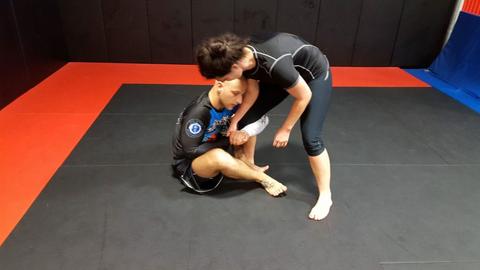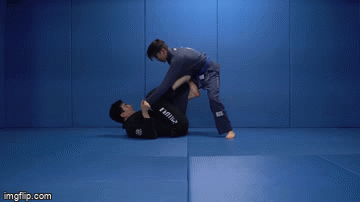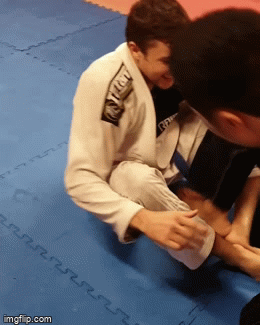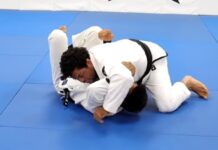
Seated guard. It can be a guard none shall pass or a guard that you can’t keep a hold of. It all depends on how you position yourself. There are actually several different versions of the seated guard, one of which is the shin-on-shin guard. This seated guard has never gotten the recognition it deserves. Namely, people usually look at seated guards including the butterfly guard as inferior and not effective. Contrary to all the evidence, these guards are only used sparingly. The Shin-on-shin guard can be an extremely powerful weapon if you use it to its full potential.
Trying to figure outstanding opponents from the guard can be a very tricky business in Jiu-Jitsu. If you’d like to be on your back, you actually have a myriad of guards you can use. However, if you like to be a bit more offensive and look for attacks instead of retention, you’ll need posture. In other words, you’ll need a seated guard variation. The shin-on-shin guard can be an ultra-effective one for you and a highly annoying position for your opponents. You need to figure out three things, though, before you can take it for a test drive – how to hold it, how to attack, and how to get in and out of it. Preferably, in that particular order.
Holding the Shin On Shin Guard
The shin-on-shin guard looks like a koala bear hanging on a eucalyptus tree. Let me reiterate the point that this guard will be effective if the opponent stands up. Otherwise, there’s no point in attempting to go shin-on-shin. That’s why we have the butterfly guard. That said, the shin-on-shin should b your first reaction when you see a straight leg in front of you.
The guard position itself is not complicated. You are seated on the ground, with the shin of your leg on the shin of your opponent’s same side leg. Your arm on that side goes around the knee, hugging the leg, while you have the other arm free to post and move around. Easy right?

First of all, the shin. The area of the shin right above your ankle. is the only thing that should be in contact with the opponent’s shin. That allows your foot to act like a butterfly hook, meaning your fingers need to be pointing up. Next up, knee. The closer your knee is to the ground, the worse your guard shall be. The knee should actually be pointing up and slightly to the side.
Finally, the arms. The arm you have around the opponent’s leg should be positioned elbow deep, right behind the knee. This brings us to the crucial part that makes or breaks the shin-on-shin guard. Your elbow should be propped up against the inside of your knee, forming a tight and stable frame. This along with positioning your head to the inside of the thigh will make the guard solid all over. Moreover, the often-used defense of pushing your head to the ground does not work here. This brings us to attacks.
A Few Sneaky Attacks

Conversely, when they decide to stay up, you can opt for yet another sweeping attack. This time though, you’ll be using a lapel to make things even tighter. In essence, you’ll be doing the same sweep, just holding on to a lapel with the arm that’s around the leg. Or, even better, holding on to the far side arm with that same arm of yours, after you pass it off. This ends up being a skull crusher-type of sweep with the opponent having nothing to post with.

Getting In And Out Of The Shin-On-Shin Guard
There’s another aspect to the shin-on-shin guard that makes it so attractive to people. That’s transitioning to other guards. You see, with most guards that you play with your back to the ground, you have limited transitioning options. The shin-on-sin, on the other hand, allows you to go where ever you want. You can go to other seated guards to choose a supine guard or even go for takedowns.
Any X-guard variation is readily available from the shin-on-shin guard. In fact, going to X-guard is the most common destination. Single leg X is the closes, but the full X and reverse X are not far away either. Whatever the case, there’s another caveat here – you can go to the X guards or come out of them back into the shin-on-shin. A magic circle of no escape for your opponent.

Wrap Up
The Shin-on-shin guard is an awesome one to use. It allows you to just sit there and wait until an opponent tries to do something. Or, you could go about attacking them in various ways, with and without the Gi. The guard is extremely easy to figure out, and if you learn how to hold it first, you’ll have crazy amounts of success with it.










































